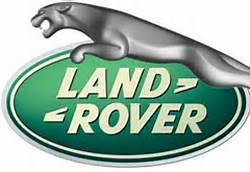Jaguar Land Rover Wins 2014 Altair Enlighten Award for Innovation in Automotive Vehicle Lightweighting
 |
TROY, MI -- Aug. 4, 2014: Altair today announced that luxury sport vehicle maker, Jaguar Land Rover, has won the 2014 Altair Enlighten Award competition for the development and implementation of its premium lightweight architecture design concept on the latest Range Rover vehicles. The award, presented in collaboration with the Center for Automotive Research (CAR), is the automotive industry's first award program created specifically to acknowledge innovations in vehicle light-weighting.
As part of Jaguar Land Rover's approach to sustainability, its lightweight vehicle strategy takes a holistic approach to CO2 reduction, linking strategies of weight reduction in the body and chassis systems to powertrain and related secondary weight savings, while maximizing recycled material use and lowering energy consumption during the manufacturing stage. The overall result is a significant decrease in the carbon footprint of the vehicle, verified through lifecycle analysis tools. Body and chassis weight savings are focused on the use of lightweight metals (primarily aluminium and magnesium) and plastics (both composites and thermoplastics), as well as an overall target of 40 percent weight savings over a conventional steel spot-welded body with equivalent or improved attributes.
As an example of the premium lightweight architecture in action, the new lightweight vehicle Range Rover body weighs only 288 kg (658 lbs) in comparison to the previous model body weight of 498 kg (1096 lbs), a reduction of over 40 percent. Significant savings were also achieved for the chassis (70 kg, 154 lbs) and powertrain (130 kg, 287 lbs depending on derivatives).
Jaguar Land Rover developed new computer-aided engineering techniques to simulate crash, durability, noise, vibration, and harshness attributes. In parallel, new manufacturing simulation techniques for stamping, casting and joining the lightweight vehicle structures were created. These new simulation methods have enabled the company to develop lightweight vehicle products in the virtual world to minimize incremental development testing.
"We would like to congratulate Jaguar Land Rover for winning the 2014 Altair Enlighten Award," said David Mason, Vice President, Global Automotive for Altair. "Their holistic approach to vehicle lightweighting and CO2 reduction has yielded an aggressive and highly impressive methodology that is enabling the creation of new and exciting vehicle architectures."
This year, Dow Automotive Systems was recognized as runner up for its BETAMATE™ bonding solution and its application on Kenworth and Peterbilt trucks. BETAMATE™ two-part epoxy structural adhesive is an industry-first material engineered to enable a new automated robotic process for untreated aluminium bonding. The solution has led to a weight reduction of 9 kg (20 lbs) as well as cost savings for its use in truck cabins.
"This year's entries demonstrated a wide range of innovative solutions to meet the weight reduction challenges of modern automotive design," said judging chair Dr. Jay Baron, President and CEO of CAR, and director of CAR's Coalition for Automotive Lightweighting Materials. "Jaguar Land Rover, Dow Automotive Systems and all our 2014 nominees are contributing to reductions in weight, fuel consumption, and emissions. The Enlighten Award is an excellent way to highlight these achievements."
Jaguar Land Rover and Dow Automotive Systems were presented with the awards during the "Featherweight Competition: Agile, Light, and Strong" session of the 2014 CAR Management Briefing Seminars (MBS) today in Traverse City, Michigan.
The Altair Enlighten Award is intended to honor the greatest achievements in weight savings each year; to inspire interest from industry, engineering, policymakers, educators, students and the public; to create further competition for new ideas in the industry; and to provide an incentive to share technological advances.


